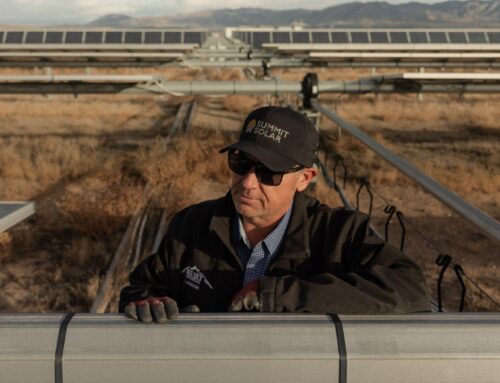India’s Renewable Revolution Has a Funding Problem
March 30, 2025
India has been investing heavily in the development of its renewable energy sector in recent years to support a green transition. While the government has repeatedly called on the international community to support its transition with funding to little avail, the state has financed a wide range of renewable energy and clean tech projects. However, the South Asian country is still heavily dependent on coal, oil, and gas, and its power demand is growing larger every year, suggesting that more needs to be done to accelerate the deployment of new green energy capacity.
In 2023, India generated 22 percent of its electricity from renewable energy sources, which, although an improvement, was still below the global average of 39 percent. The growth in India’s solar energy capacity allowed it to overtake Japan as the world’s third-largest solar power generator, contributing 5.9 percent of global solar power growth. Hydropower remains India’s largest clean energy source, at around 8 percent, while solar and wind power together provide 10 percent of India’s power mix.
However, India continues to rely heavily on fossil fuels for its energy mix, with coal, oil, and gas contributing to 78 percent of its electricity generation in 2023. Coal accounts for nearly 50 percent of India’s installed power capacity and over 70 percent of power generation.
According to India’s Ministry of New and Renewable Energy, “In 2024, the country made significant strides in solar and wind energy installations, policy advancements, and infrastructural improvements, setting the stage for ambitious targets in 2025. With a commitment to achieving 500 GW of non-fossil fuel-based energy capacity by 2030, India is emerging as a global leader in clean energy. As of 20th Jan 2025, India’s total non-fossil fuel-based energy capacity has reached 217.62 GW.” Approximately 24.5 GW of solar capacity and 3.4 GW of wind capacity were added last year.
Despite significant progress in recent years, India still has a long way to go to decarbonize its power sector. While India’s per capita emissions are much lower than those of many other countries, it has become the third-largest emitter of greenhouse gasses annually. The South Asian country has the largest population in the world, and while it is currently considered a lower-middle-income country, it is the world’s fastest-growing large economy.
India must act now if it hopes to decarbonize over the coming decades toward its goal of net-zero emissions by 2070. The government has made several ambitious energy targets to encourage this shift, including achieving a power mix with at least 50 percent renewables by 2030 and energy independence by 2047. However, with the power demand expected to quadruple by 2050, India faces an uphill battle in achieving these aims.
Climate change is becoming an increasingly bigger threat to India with over 75 percent of Indian districts at risk of extreme weather, with cyclones, floods and drought becoming more commonplace. Therefore, India is seeing the direct threat of not carrying out a green transition fast enough.
To help decarbonize its power sector, India must invest more heavily not only in the deployment of more wind and solar energy capacity but also in battery storage. This will help it to provide a more stable supply of clean electricity to the grid and transition away from fossil fuels. The government must also significantly improve the country’s transmission infrastructure to prepare for new clean energy capacity to be added and avoid losses in power transmission, a challenge that plagues most states in India.
In addition, the development of mini- and microgrids could also help improve power access in rural regions of the country and reduce the burden on the grid. Approximately 4.59 GW of new rooftop solar capacity was installed in 2024, marking a 53 percent increase from the previous year. However, the deployment of this technology has been limited due to a lack of affordability, consumer awareness, and the professional expertise required to install rooftop panels.
The government can take a number of steps to support India’s decarbonization aims, primarily by investing in the deployment of more clean energy and battery technology, as well as improving the country’s grid system. However, to do this, India will likely need to attract higher levels of foreign investment. Current estimates suggest that India will have to spend roughly $100 billion a year, or 2.8 percent of its GDP, to achieve its net-zero target by 2070.
In 2021, India’s Prime Minister, Narendra Modi, called on developed countries to set a target of contributing at least 1 percent of their GDP to green projects in the developing world. Yet, India’s green transition roadmap remains highly underfunded. Despite promises of greater investment to support low-income countries in achieving their decarbonization goals at each year’s COP climate summit, not enough funding has been designated to support a global green transition. This suggests that while India is ambitious in its green transition aims, without the necessary funding, it will be extremely difficult to achieve them, which would be detrimental to global climate aspirations.
By Felicity Bradstock for Oilprice.com
More Top Reads From Oilprice.com
- Trump: 25% Tariff On Anyone Who Buys Venezuelan Oil & Gas
- Iraq Hands BP Final Approval for Kirkuk Oil Development
- India Turns Away Russian Oil Tanker As Sanctions Evolve
Search
RECENT PRESS RELEASES
Related Post




